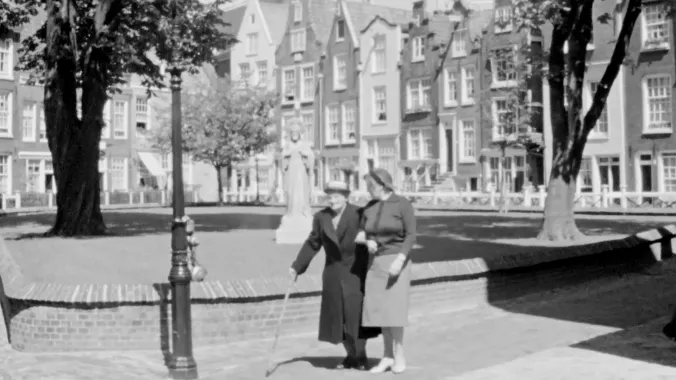Course Info
6 video lessons (29 Mins)
Published
1963-
4.28
Preview Course
Browse Course Chapters
-
1.Introduction
1 min
-
2.The Heart of the City
5 mins
-
3.The Baroque Period
4 mins
-
4.Drawn to the City
5 mins
-
5.Forces of Expansion
5 mins
-
6.Creativity in Cities
6 mins
Course Description
This short documentary film is the fourth part of a larger series hosted by Lewis Mumford, an American historian, sociologist, philosopher, and literary critic whose studies in the 20th century included attention to cities and architecture that persists in influence into the present day.
The "Heart of the City" explores the adventure and culture that can be found in the compact, historic centers of cities, which, Mumford warns, are in danger of vanishing. For context and historical perspective, Mumford traces the evolution of cities from the Medieval cities showcased in the third part of the film series, to the Baroque Age, which were shaped by a preoccupation with power and order, and into the 19th century, when commercial forces began to carve up cities in a trend that reached its highest pitch with the massive skyscrapers of the 20th century.
In this fourth installment of the series, Mumford makes an impassioned plea for the protection of the heart of the city—the active and vibrant places that continue to draw people to urban areas, despite all of the political and market forces working against them. The appeal of the heart of the city, according to Mumford, is the power to gather and concentrate all human activities in one place, while still resulting in a more meaningful and harmonious whole. In the course of arguing for the heart of the city, Mumford does use words that have become familiar in contemporary planning debates, words like protection and character, that have obviously shifted their focus to controversies about housing development since Mumford deployed them in this film.
Learn these skills
- History
- Land Use
- Urban Design
- Urbanism
- Walkability
- Zoning Codes
AICP CM
This course is available for 0.5 AICP CM Credit


























